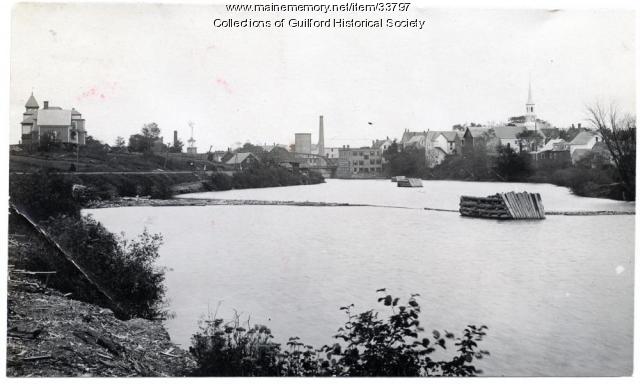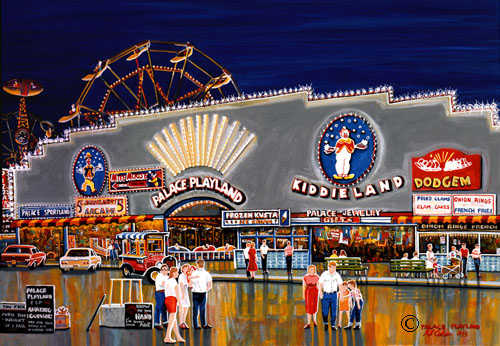Keywords: Boom
Item 23070
Two boom bags, Ambajejus, ca. 1955
Contributed by: Ambajejus Boom House Museum Date: circa 1955 Location: T1 R9 WELS Media: Photographic print
Item 23069
Towboat and boom bag, Ambajejus, ca. 1950
Contributed by: Ambajejus Boom House Museum Date: circa 1950 Location: T1 R9 WELS Media: Photographic print
Exhibit
Princeton: Woods and Water Built This Town
Princeton benefited from its location on a river -- the St. Croix -- that was useful for transportation of people and lumber and for powering mills as well as on its proximity to forests.
Exhibit
Fashion for the People: Maine's Graphic Tees
From their humble beginnings as undergarments to today's fashion runways, t-shirts have evolved into universally worn wardrobe staples. Original graphic t-shirts, graphic t-shirt quilts, and photographs trace the 102-year history of the garment, demonstrating how, through the act of wearing graphic tees, people own a part of history relating to politics, social justice, economics, and commemorative events in Maine.
Site Page
View collections, facts, and contact information for this Contributing Partner.
Site Page
Biddeford History & Heritage Project - V. A Cascade of Booms & Busts (1790-1865) - Page 1 of 3
"A Cascade of Booms & Busts (1790-1865) Letter to Captain Nathaniel Goodwin of Biddeford, 1818McArthur Public Library After the Revolution was…"
Story
Working at International Paper and being part of the community
by Gary Desjardens
Working for International Paper and volunteering for the Special Olympics of America
Story
The Cup Code (working at OOB in the 1960s)
by Randy Randall
Teenagers cooking fried food in OOB and the code used identify the product and quantity.
Lesson Plan
Longfellow Studies: "The Jewish Cemetery at Newport"
Grade Level: 6-8, 9-12
Content Area: English Language Arts, Social Studies
Longfellow's poem "The Jewish Cemetery at Newport" opens up the issue of the earliest history of the Jews in America, and the significant roles they played as businessmen and later benefactors to the greater community. The history of the building itself is notable in terms of early American architecture, its having been designed, apparently gratis, by the most noted architect of the day. Furthermore, the poem traces the history of Newport as kind of a microcosm of New England commercial cities before the industrialization boom. For almost any age student the poem could be used to open up interest in local cemeteries, which are almost always a wealth of curiousities and history. Longfellow and his friends enjoyed exploring cemeteries, and today our little local cemeteries can be used to teach little local histories and parts of the big picture as well.
Henry Wadsworth Longfellow visited the Jewish cemetery in Newport, RI on July 9, 1852. His popular poem about the site, published two years later, was certainly a sympathetic portrayal of the place and its people. In addition to Victorian romantic musings about the "Hebrews in their graves," Longfellow includes in this poem references to the historic persecution of the Jews, as well as very specific references to their religious practices.
Since the cemetery and the nearby synagogue were restored and protected with an infusion of funding just a couple years after Longfellow's visit, and later a congregation again assembled, his gloomy predictions about the place proved false (never mind the conclusion of the poem, "And the dead nations never rise again!"). Nevertheless, it is a fascinating poem, and an interesting window into the history of the nation's oldest extant synagogue.













